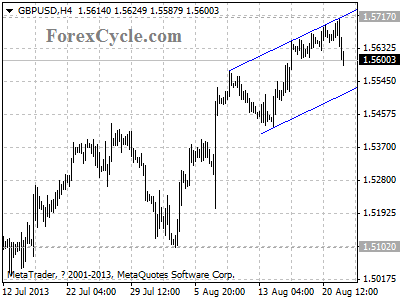By Profit Confidential
 One of the most successful retail merchandisers on the stock market is The TJX Companies, Inc. (TJX), which operates T.J. Maxx, Marshalls, HomeGoods, Winners, HomeSense, T.K. Maxx, and Sierra Trading Post stores. The company has been a powerhouse wealth creator for shareholders as its price points for merchandise and clothing meets the needs of the marketplace perfectly.
One of the most successful retail merchandisers on the stock market is The TJX Companies, Inc. (TJX), which operates T.J. Maxx, Marshalls, HomeGoods, Winners, HomeSense, T.K. Maxx, and Sierra Trading Post stores. The company has been a powerhouse wealth creator for shareholders as its price points for merchandise and clothing meets the needs of the marketplace perfectly.
In the company’s latest earnings report, for its second fiscal quarter of 2014 (ended August 3, 2013), total sales grew a solid eight percent to $6.4 billion. Comparable store sales for the quarter grew four percent compared to the same period last year. Earnings in the second quarter were $480 million, while earnings per diluted share grew 18% to $0.66 comparatively.
The company cited above-plan results in its latest quarter and management increased its full-year guidance for fiscal 2014.
Also noteworthy was the company’s share repurchases. During the second quarter, the company repurchased 6.4 million shares for $325 million. In the first half of fiscal 2014, the company spent $625 million buying 12.9 million shares. Total share repurchases this year are expected to be between $1.3 billion and $1.4 billion.
There is a lot going right with this enterprise. Its cash position continues to build and shareholders’ equity is rising significantly higher. Certainly, another increase in the company’s dividend is in the cards sometime in the bottom half of its current fiscal year.
Management expects third-quarter comparable store sales to grow between two and three percent. Diluted earnings per share (EPS), however, are expected to grow 11% to 16%, which is significant.
On the stock market, The TJX Companies has been a very good wealth creator and, in my view, it makes the case that it’s worth accumulating when the stock is down. The company’s long-term stock chart is featured below:
Chart courtesy of www.StockCharts.com
Operational success in retail merchandising is no small feat. Competition is fierce and margins are thin, so when a company like The TJX Companies is expecting double-digit EPS growth, that’s meaningful. With a current price-to-earnings (P/E) ratio of approximately 20, I don’t view the shares as being overpriced.
From Wall Street’s perspective, this stock is trading right at its median price target. Like I say, this is the kind of company you can think about on a major price retrenchment or correction.
The big thing this business has done is that it’s carved out a niche market in off-priced merchandise and clothing. Its stores are go-to brands for the American middle class, and that provides a lot of certainty in an industry that’s replete with failure.
This particular company offers what I like to refer to as the “package,” which for investors is a combination of good management, a deliberate business plan, prospects for top- and bottom-line growth, and a track record of success, both operationally and on the stock market. (See “The One Stock That Always Seems to Keep on Rising.”)
Naturally, good companies tend to be good stocks, which is why they are often at their highs. But this shouldn’t discourage investors looking for an attractive entry point. A company with a strong track record of wealth creation on the stock market is a very powerful indicator.
Article by profitconfidential.com







